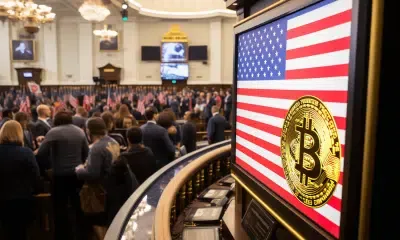
Stellar (XLM): Beyond Speedy Payments, A Future Brewing in DeFi
Stellar Lumens (XLM) isn’t new to the crypto scene; it carved out its space by making international payments quick, cheap, and open to more people. But the crypto world never sits still, and neither does Stellar. Now, with smart contracts live and a serious look at Decentralized Finance (DeFi) and tokenizing real-world things (RWAs), you have to wonder: is Stellar about to transform from its payment roots into something much bigger?
We’re going to unpack what makes XLM tick, where it’s already making a difference, how the market sees it, and the big moves that are defining its path forward.
What’s Under Stellar’s Hood: XLM and its Tech
Jed McCaleb, who also helped start Ripple, teamed up with Joyce Kim to launch Stellar back in 2014 as an open, decentralized blockchain. Its own currency, the Lumen (XLM), is the lifeblood of everything that happens on the network.
Lumens aren’t just one-trick ponies. You’ll use them for tiny transaction fees – just 0.00001 XLM per task – which cleverly keeps network spam at bay. New accounts need a single XLM to get started, another way to stop people from cluttering the system. Plus, XLM steps in as a go-between currency, helping users swap different types of money on Stellar if there isn’t a direct, easy way to trade them.
Forget power-hungry Proof-of-Work; Stellar uses its own system called the Stellar Consensus Protocol (SCP). Think of it as a club where each member (a validator node) picks a small group of other members they trust – their “quorum slice.” When enough of these trusted groups overlap and give a thumbs-up, transactions get confirmed in a flash, usually 3 to 5 seconds. This whole setup is built for speed, affordability, and not wasting electricity.
To bridge the gap with old-school finance, Stellar has “Anchors.” These are the regulated banks or money services that let you bring real money in and out of Stellar. They issue digital tokens on the network that are fully backed by actual assets like US dollars or Euros. Then, anyone can trade these digital dollars or euros directly with each other on Stellar’s own trading platform, the Stellar Distributed Exchange (SDEX), along with any other asset created on Stellar.
Stellar in Action: Making a Tangible Difference
The way Stellar is built makes it a natural fit for fixing some of the clunky parts of how money usually moves. Sending money across borders is where Stellar first made its name. It’s fast and cheap, slashing the usual expenses and delays of international transfers.
Look at MoneyGram International: they teamed up with Stellar so people can send and get cash worldwide, using USDC (a digital dollar on Stellar) to make it happen, linking MoneyGram’s physical locations to the crypto world. You’ll find others, like ClickPesa in East Africa and Félix & Bitso in Latin America, using Stellar to make sending money home easier too.
Turning real things into digital tokens is another of Stellar’s strong suits. Big names have noticed; asset giant Franklin Templeton puts shares of its U.S. Government Money Fund on Stellar as “BENJI” tokens. Societe Generale – FORGE, part of the big French bank, picked Stellar for their EURCV, a Euro stablecoin that meets Europe’s new MiCA rules.
The Stellar Development Foundation (SDF) itself is pushing hard to get a lot more real-world assets represented on its blockchain. Helping people left out by traditional banks is a big part of Stellar’s DNA. Through programs like Stellar Aid Assist, groups like the UN’s refugee agency (UNHCR) have quickly gotten cash aid to people forced from their homes and those impacted by war in Ukraine.
Soroban’s Arrival: Stellar Dives into DeFi
Stellar was known for payments, but it’s now making a big play with Soroban, its new smart contract platform. Soroban went live on the main network in early 2024, following careful testing and a gradual release. Now, developers can use popular tools like Rust and WebAssembly (WASM) to create much more intricate decentralized apps (dApps) right on Stellar. This unlocks the potential for advanced DeFi tools, NFT markets, and all sorts of new ideas.
With Soroban in the mix, Stellar expects its DeFi scene to explode, making room for things like lending, borrowing, and automated trading systems (AMMs) to thrive. To kickstart this, the SDF is backing developers with a $100 million Soroban Adoption Fund, and we’re already seeing early projects like the Blend lending system pop up.
XLM in the Market: Value, Supply, and Where to Find It
Around mid-May 2025, XLM’s price hovered near $0.11, giving it a total market value of about $3.2 billion and placing it within the top 50 or 60 crypto assets by size. Like most cryptocurrencies, XLM’s price has been on a rollercoaster at times, hitting its peak near $0.94 way back in early 2018.
Stellar started with 100 billion XLM. They ditched an early plan for inflation in October 2019. Then, a month later, the SDF got rid of over half the XLM supply – about 55 billion tokens – bringing the total possible XLM down to roughly 50 billion, and no more will ever be made. The SDF keeps some of what’s left to fund the network’s growth, help the ecosystem, and cover its own running costs, and they publish reports about how they use these funds.
Getting your hands on XLM is pretty easy; it’s on all the big crypto exchanges like Binance, Coinbase, and Kraken. This wide reach means plenty of people can buy and sell it, which helps both everyday users and bigger investors get involved. You’ll typically see it traded against USDT, US dollars, Bitcoin, and Euros.
Headwinds and Hurdles: Stellar’s Path Isn’t Without Obstacles
Even with all its advancements, Stellar isn’t without its share of difficulties. The worlds of international payments and DeFi are crowded. Ripple (XRP), which shares a founder with Stellar, is still a major player for big institutional payments, though they focus on slightly different areas. Speedy blockchains like Solana and Algorand also offer strong alternatives for both DeFi and payment systems. Rules for crypto are still being written around the globe. XLM, like many digital coins, isn’t always clearly defined as a security or something else in different countries, creating some unpredictability.
The SDF talks regularly with rule-makers to work through these issues, and Stellar itself has built-in tools to help businesses meet anti-money laundering and customer ID rules. Europe’s new MiCA law is a big one, affecting everyone offering crypto services there. Some people worry that the SDF holds too much XLM and has too much say over Stellar’s direction, which could make it less decentralized. While Stellar’s consensus method is built to be decentralized, the SDF’s large presence and past token ownership have sparked discussion. The Foundation did burn a lot of tokens in 2019 to help ease these worries, and they always highlight their non-profit goal of growing the network and making finance more inclusive.
What’s Next for Stellar: Ambitions and Catalysts for Growth
The Stellar Development Foundation has a clear game plan for making the network more useful and getting more people to use it. Looking at 2025 and further out, they’re aiming to make Stellar handle more traffic and be easier to use, grow the DeFi world on Soroban significantly, get more real-world assets tokenized on the platform, and attract more users by partnering with businesses and creating simple apps. They’re constantly tweaking the underlying tech with updates (like the recent Protocols 20, 21, and 22) to make smart contracts better, speed up the network, and give developers improved tools. Part of this is about handling more transactions every second and adding new features like passkey signing.
Stellar’s tech is a good match for government-backed digital currencies (CBDCs), and the SDF has been part of pilot projects looking into them, including work connected to Ukraine and Brazil. As CBDCs become more common, they could work with Stellar, but they might also become competitors.
Wrapping Up: Stellar’s Enduring Value and Evolving Ambitions
There’s no doubt Stellar (XLM) has carved out a solid reputation for making worldwide payments quicker, less costly, and available to more people. Its dedication to opening up finance for everyone continues to push it forward. Adding powerful smart contracts with Soroban shows Stellar isn’t content to stand still; it clearly wants to be a major hub for DeFi and all kinds of tokenized assets.
Sure, tough competition, unpredictable markets, and shifting regulations are still hurdles. But Stellar’s solid tech, expanding community, and unwavering attention to solving actual problems make a strong argument for its lasting importance and its ability to shape how money works in the future. What comes next will hinge on how well it can deliver on its big plans, get people and businesses to actually use its new tools, and steer through the constantly shifting crypto landscape.




